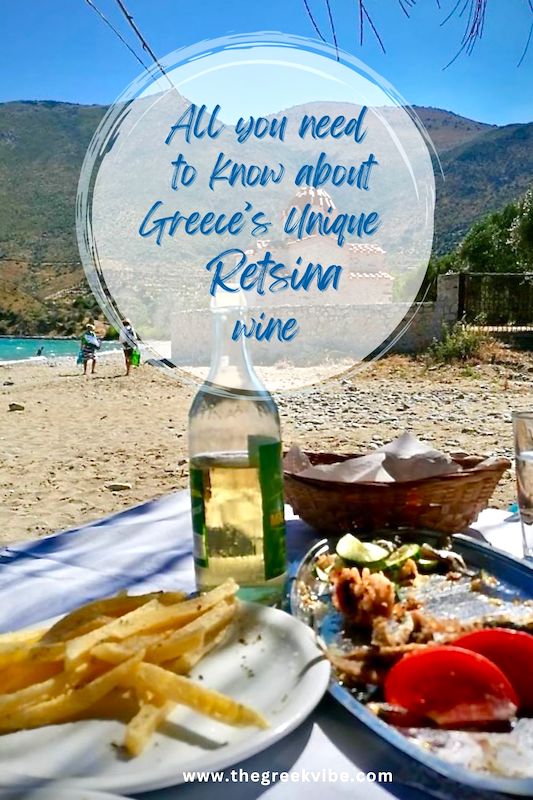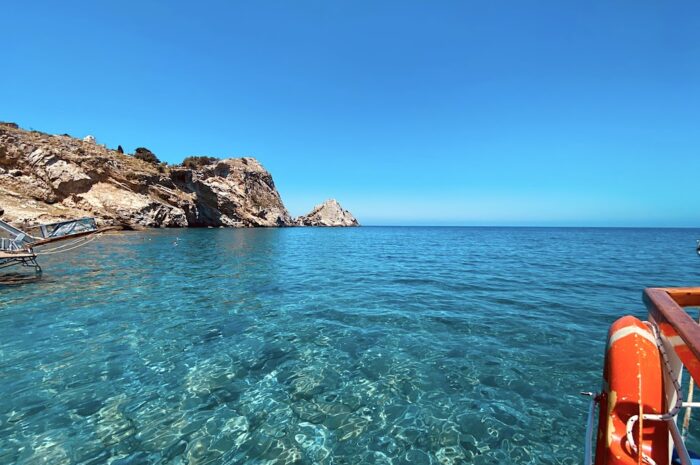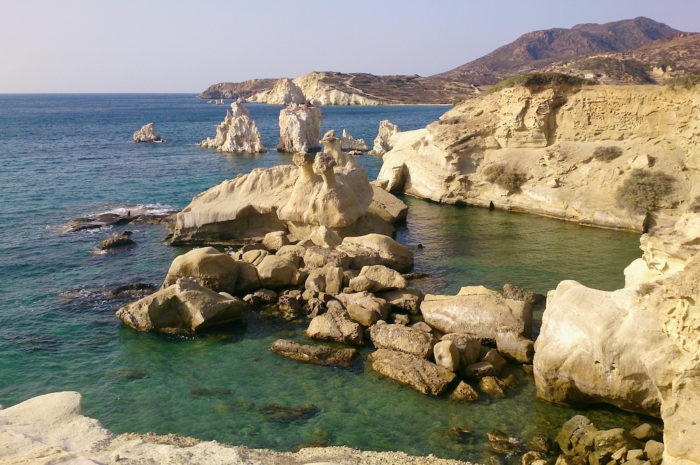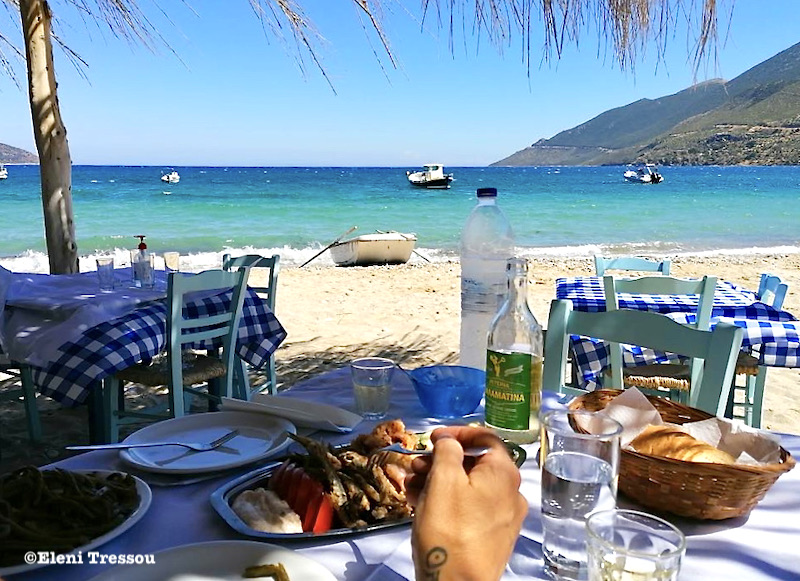
If you look back to the postcards of Greece in the late 1960s, 1970s and early 1980s, you’ll always see a bright red or blue wooden table set on the seafront topped with tiny plates full of Greek mezedes and glasses of golden tinged retsina wine complete with bobbing fishing boats in the background.
Retsina was ubiquitous and in my view, the ultimate Greek wine, a mostly dry wine that had stood the test of time with a very long 3,500-year history. And then, suddenly in the mid-1980s, production stopped and finding some was a true challenge.
The Greek wine that was as much associated by foreign travelers with Greece as was Zorba and the dreamy Greek beaches, disappeared.
What is Retsina Wine
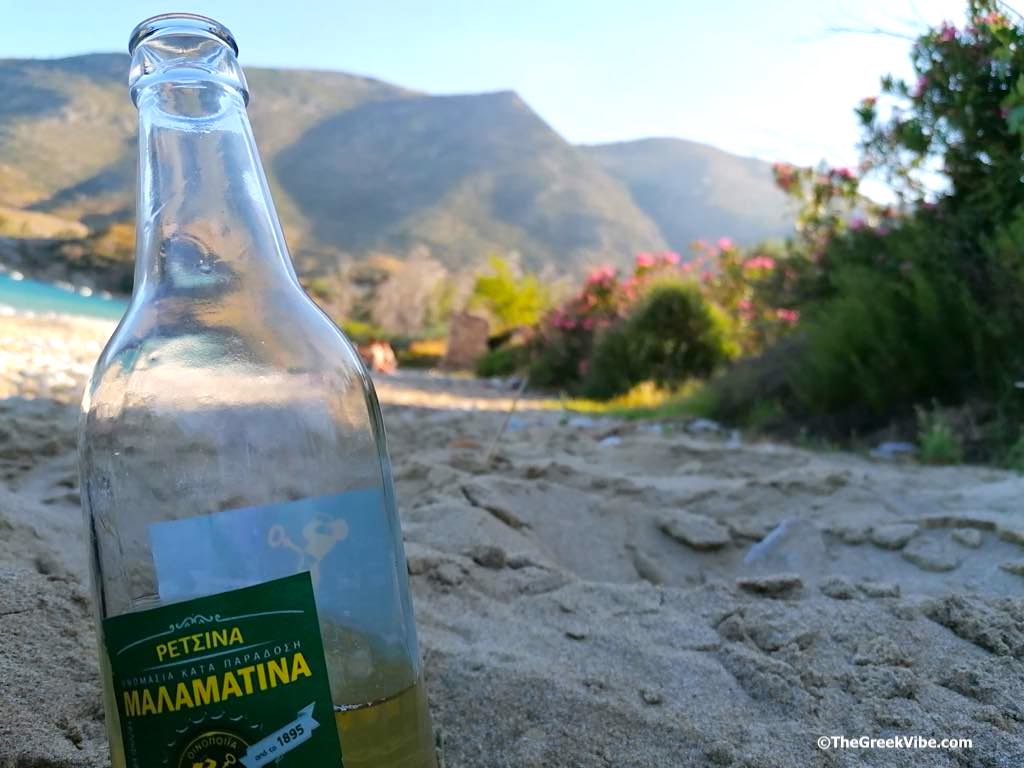
Retsina was mainly a white or slightly pink wine that got its strong taste from the resin used to seal initially the ancient amphorae where the wines were stored, and later the barrels, and as a preservative.
Resin from the pines in or near the vineyards was used to keep the wines from oxygenating as they helped keep air out, which in turn also gave the wine a unique resin taste. Remember this was way before the glass bottles that we have today.
Visitors throughout the centuries wrote about the particular taste of retsina wines which they came across in their travels to Greece, to the Greek islands, and in the Peloponnese.
👉🏼 Find the best hotel deals for you
In the 1950s and 1960s, the best retsina was made in Attica, and particularly in the Mesogeia area where today’s Athens International Airport was built. This territory – before the airport and the fires – together with Evia island, were full of Aleppo pines. Sadly, during the construction of the airport, most of the vineyards in the area where destroyed. It was the same area that also produced Greece’s famous thyme honey. The Mesogeia (meaning Middle Earth) had the finest climate, according to ancient Greek historians.
►The Meze: Greece’s Famous Snacks
Resin was also used in other places across Greece. My pappous (grandfather) made his own wine in the very same way, using resin to protect his barrels in Tripoli, Arcadia.
I clearly remember the distinct smell of the retsina maturing in barrels as we descended into the cool cellar in the summers.
Pappous lived to be nearly 100 and my other pappou who always had a glass of retsina with his meal in the afternoon lived to be 101. So much so for the ‘expert’ warnings of toxicity or whatever.
The Social Significance of Retsina
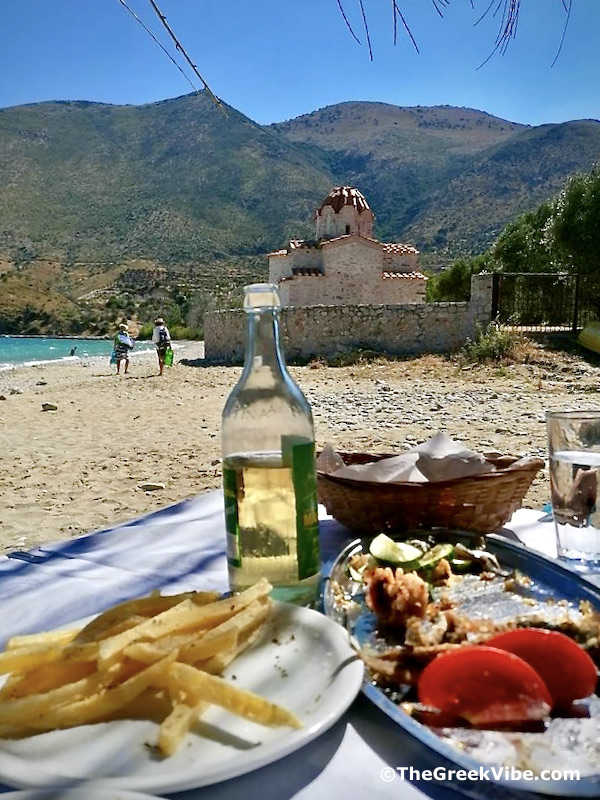
As a fan of retsina, I can only say that it was so much more than just a wine made in Greece. Retsina was a brand name associated with Greece way before enormous budgets marketing and promotion. One of my beloved professors in Chicago, sociologist Helena Znaniecki Lopata told me that her big dream was to sit on a Greek beach drinking retsina all day. And she was not the only one. For decades, foreigners would come to Greece seeking to accompany their big fat Greek salad in the sun looking at the sea with some amber-colored retsina.
Retsina-making was an integral part of Greek life across villages, towns, and urban centers. Everyone who made olive oil also made retsina and vinegar and they were very proud of their own. So much so that it was always a subject of ‘friendly’ debate at the kafeneion (coffee house).
There were very few homes in Greece that did not have at least one barrel of their own in the cellar. And even fewer tavernas without barrels full of homemade retsina gracing their walls.
► Travel to Greece from Your Home in 7 Easy Steps
Why Greeks Stopped Drinking Retsina
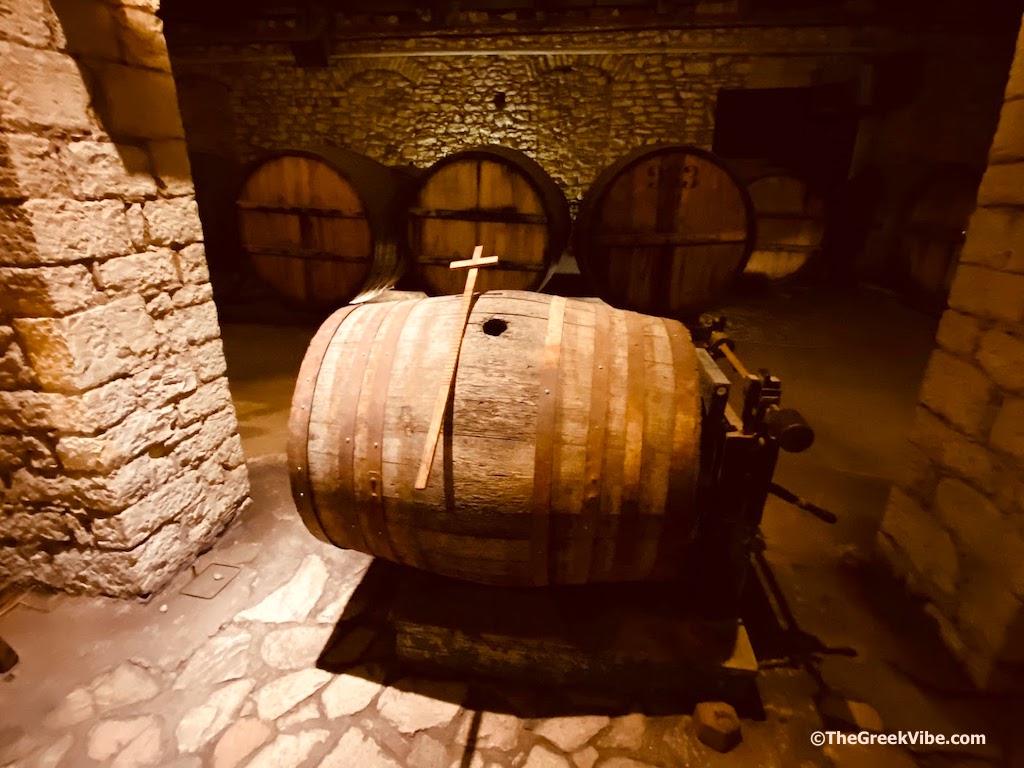
Greeks stopped drinking retsina with the exception of die-hard fans like myself and older Greeks living in the villages somewhere in the late ’80s. They stopped for many reasons.
Initially, the European Union, which has repeatedly failed to take into account the unique heritage and the local traditions and practices of member states in its rulings, and local ‘experts’ said resin was toxic. And in some cases, Greek retsina makers would indeed go too far using more resin than necessary to cover up any foul taste or poor quality. This ignorant bootleg practice gave retsina a bad name. And so the classic Greek wine that everyone knew and loved for centuries, got a bad reputation with the poor quality variety giving drinkers headaches instead of happiness.
2. Greek governments are still failing to protect the country’s unique products due to vested interests and pure lack of knowhow, organization, planning, and will to do so.
3. Sadly, Greeks, Greek authorities and restaurateurs associated retsina with the lower classes and times of deprivation as they did other Greek (Mediterranean Diet) staples such as beans (“gigantes”), lentils (“fakes”), smoked herring (“regga”), and dried macherel “tsiros”, traditional sourdough bread – which have all today made a comeback due to their undeniable health benefits.
4. Greek winemakers decided to try their hand at making different styles of wine which today can easily compete with celebrated winemakers like the French, the Italians and the Californians. In that time however, the taste of retsina was replaced by new exceptional wines that can accompany a diverse array of dishes and foods. At the same time, production stopped, demand dropped, younger generations don’t even know of retsina and what it should taste like.
► How to Live Long and Happy Like a Greek
5. Additionally, retsina was a cheap house wine affordable for the “masses” and the tourists who came to Greece on a budget. Even today, a litter costs about 3.95 euros compared at least 7 euros for other wines.
In that time, thankfully there were two Greek companies that continued to produce retsina: Kourtaki (Greek Wine Cellars, 1895) and Malamatina (since 1895).
Retsina the Word
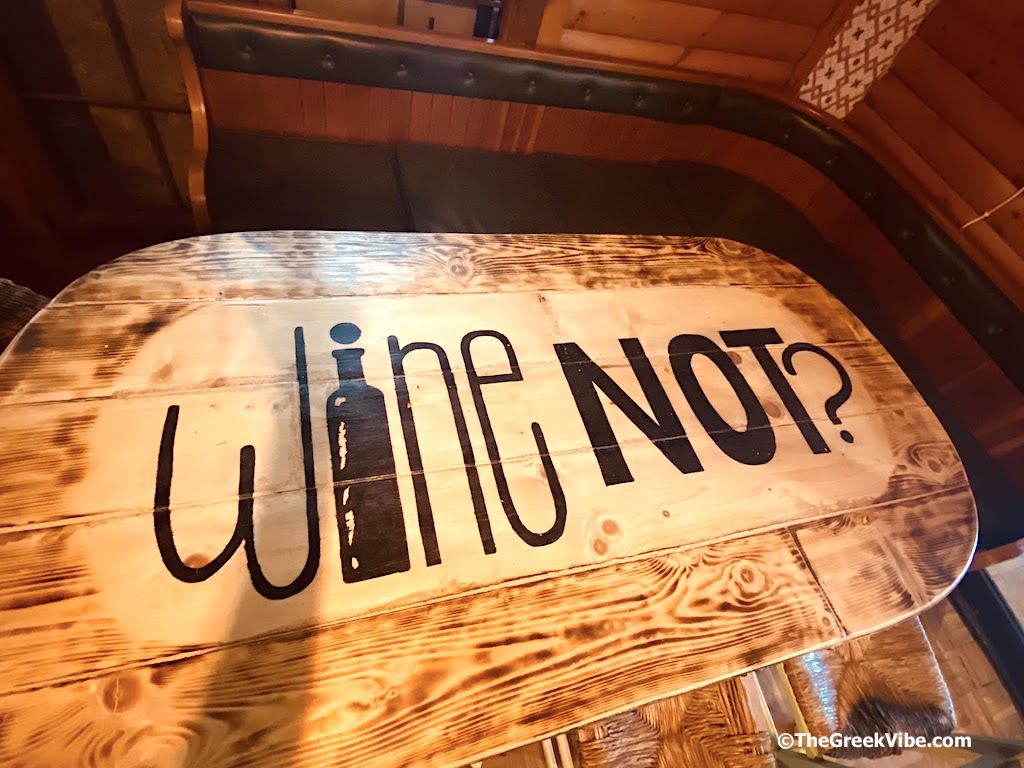
The word retsina is derived from the Ancient Greek “ritini” which means pine resin and which later evolved in the Middle Ages to “retsini”.
Another related Greek word: “retsinia” has a negative connotation. The word refers to the stain left behind by the oily resin… it came to mean stigma, slander, or insult.
Back in the mid-1800s, the wine was also known as “ritinitis oinos” a term used by Greek writer Alexandros Papadiamantis when referring to retsina. Today, in a new marketing effort to rebrand retsina, the term is again used.
Ancient Greek Retsina Wine Back in Demand
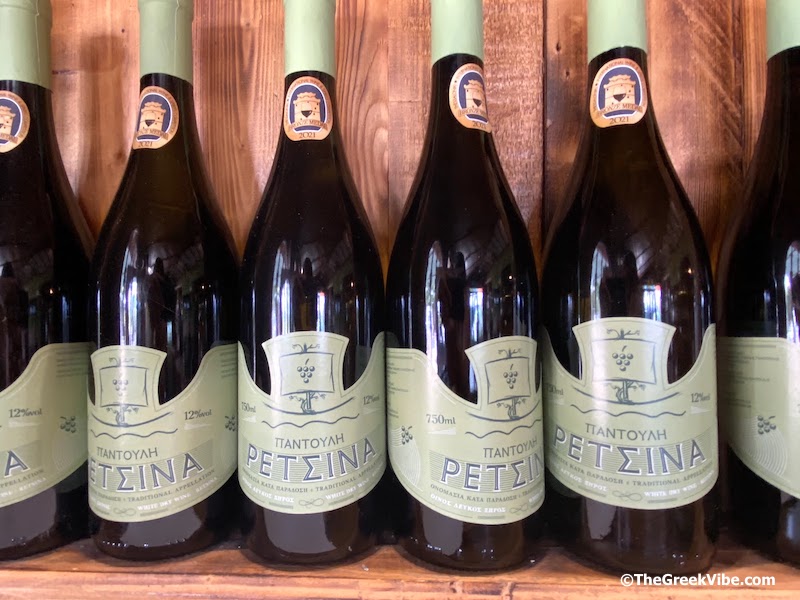
In the last few years, younger winemakers and even larger producers have gone back to making retsina and adding one or two labels to their lists of wines.
I’ve seen the new trend of premium retsina-making gain momentum during my annual visits to national food expos in Athens.
A number of these new retsina wines have secured the EU’s PGI – protected geographical indication – designation which means that at least 85% of the grapes used have to come exclusively from a given geographical area where the wine is made using traditional methods.
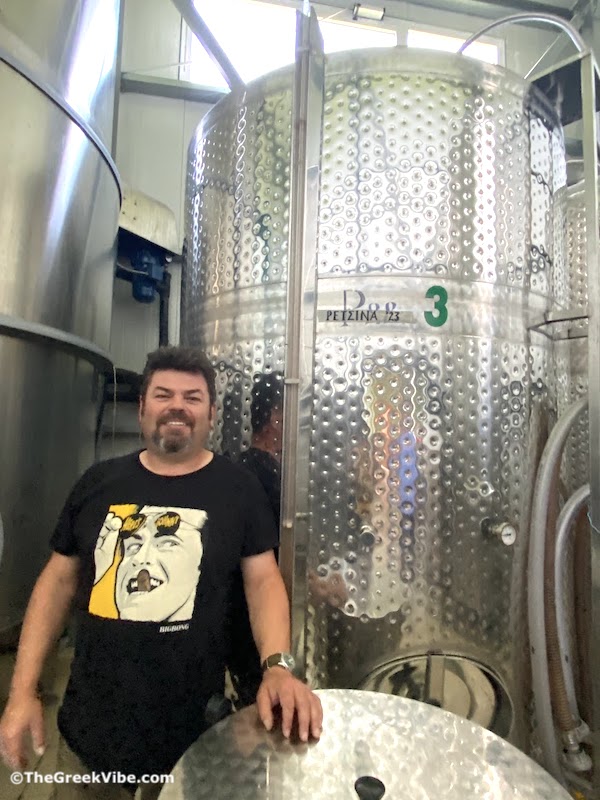
During my visit to the Pieria Region in Northern Greece, I met up with rocker at heart Yannis Pantoulis, who left the corporate world to make wine in his cozy (and very cool) winery near Mt Olympus.
Yannis told me that he decided to add retsina to his production because he loves the wine but couldn’t find it (like all of us). He experimented for years with resin before reaching the ideal balance. His two retsina wines – one white and one rose – which I of course tasted, are simply fantastic. So much so that they were the first in decades that came very close to my beloved grandfather’s. Refined but sharp as true retsina is meant to be.
In his saloon-style winery near Katerini, Yannis welcomes visitors who want to learn more about retsina and Greek wines in general. He goes on to add that demand is definitely growing for the ancient Greek wine.
Today’s retsina-makers use Greek grape varieties such as Rhoditis blended with Savvatiano and Assyrtiko, which also include Athiri on the Greek islands.
The secret to making a good retsina, Yannis explains, is by knowing the amount and quality of the pine resin used and the timing.
👉🏼 Dream of visiting Greece? Start planning
Where to Find Retsina Wine
You can always find Kourtaki and Malamatina retsina at supermarkets and minimarkets across Greece and at places popular with tourists. Both brands are very affordable but be aware, you do need to drink slowly and eat. For the finer retsina wines, you’ll need to visit a wine shop or cellar (cava), local producers, or order online.
►The Embroidered Breads of Greece on Show in Varnavas
Where to Drink Retsina
You could still find (although getting harder) and enjoy good retsina at traditional tavernas in Greece like Diporto in central Athens and Klimataria, in a “kapelio” which was usually an underground wine cellar that served basic foods much like an inn – you will most likely find this in towns like Volos, Piraeus, and Thessaloniki; in an “oinopantopoleio” which is basically a convenience store that sells basic goods, serves food and wine. And of course, the absolute place to enjoy your retsina is on the beach with some Greek appetizers listening to the waves.
All You Need to Know About Retsina
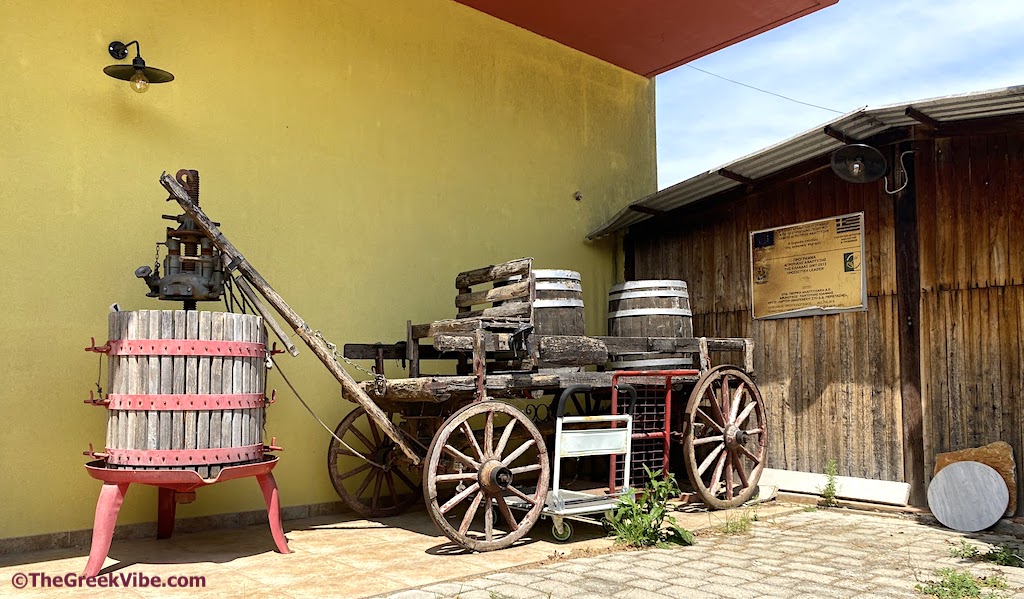
I have over the past 30 years traveled across Greece hoping to find a retsina that is close to my grandfather’s. I admit I’ve had several disappointments. Usually the new types are either too fruity, lacking body or lacking any hint of resin which is what distinguishes retsina from other wines.
I also need to add that retsina is an acquired taste – as such, you shouldn’t expect to sample a subtle white wine but instead to combine it with Greek mezedes and our popular oil-based “ladera” dishes to appreciate its taste.
✓ Retsina is a match made in heaven with traditional Greek appetizers such as smoked herring, Greek olives, sharp kefalograviera cheese, “gigantes” beans, grilled seafood like calamari, “gemista” (stuffed vegetables), and is perfect with Greece’s unique specialty food product “avgotaracho“.

✓ Drink retsina chilled in the traditional short glasses not the tall wine glasses (known as “kolonata” in Greek). You can do it that way too but retsina is a humble wine and in my opinion should be enjoyed as such. It is after all the same simplicity that attracted travelers to Greece all these years. The simple things in life are truly the hardest to find and those with the most meaning.
✓ The new varieties of retsina are more refined but you may still find an older generation winemaker or a hobbyist who still loves the stronger more robust taste that has substance and is sweet to drink. (“glykopioti”).
✓ The retsina should have a refreshing taste that ties in well with the food and leaves a stout aftertaste which can be only associated in my mind with the salty wind of Greek summer. The more refined retsina wines exude hints of citrus and herbs in addition to pine.
✓ Retsina’s alcohol content is somewhere between 11% to 13%.
✓ Try different brands to see which one is a better fit.
♫ In end today’s intoxicating post with a song composed in 1931 Giorgos Vidalis to lyrics by Spyros Melas taking us back to the age of the Greek taverna that pays tribute to the retsina featuring Antonis Delendas.
Enjoyed this Post? Share and Pin it!
